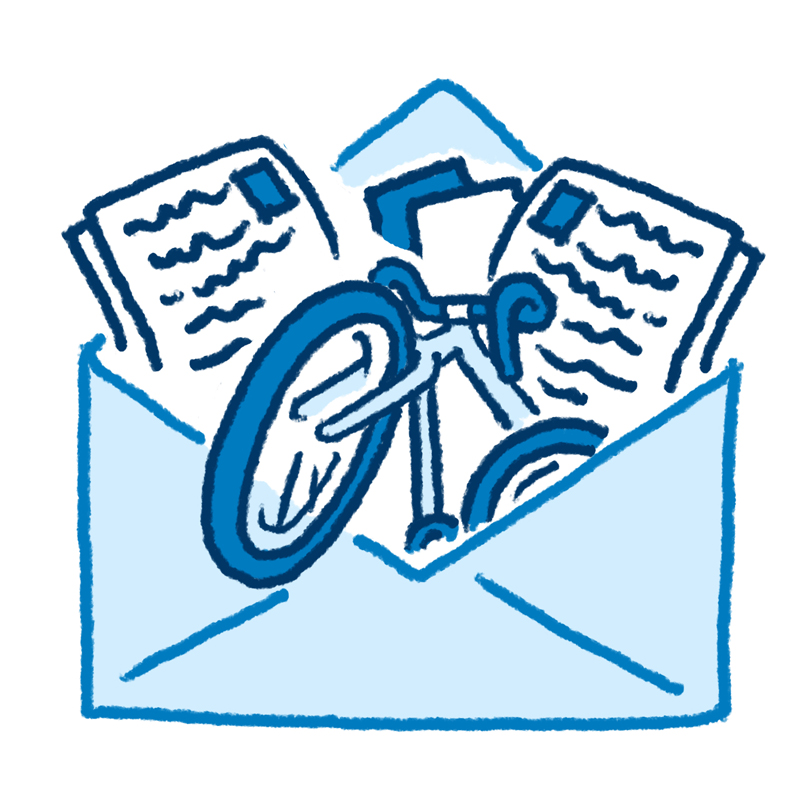10 Ways to Stay Healthy on a Bike Tour
Yes, you are probably getting the most exercise your body has ever seen and having a great time experiencing the great outdoors, but you are also putting your body through some new and sometimes extreme conditions.
On our tour across the country, we found our health in some compromising situations due to things like intense weather or lack of healthy food options. We weren’t prepared and learned our lesson the hard way. So here are a few simple steps that we recommend taking to stay healthy on the trail.
1. Train First
Start training before your tour begins. The more fit you are, the less likely you’ll sustain an early injury. Also, get comfortable with your saddle. Saddle sores suck, so make sure you put some miles on that saddle to make sure your booty is a-ok!
2. Drink Water
Drink water. Drink LOTS of water. Drink before you’re thirsty, and drink like it’s going out of style. We carried two water bottles and a hydration pack each and could have carried more.
In certain areas, you will face long stretches between services, so plan accordingly. Bring enough water to last you through those areas, and then bring an extra bottle for backup on top of that. Another great tool to add to your gear list is a water filter. These little guys can turn a sticky situation into an abundance of fresh water for you to drink!
3. Eat Healthy Calories
You are burning around 6,000 calories a day while on tour, so you’re going to want to eat everything in sight (like nine-pound ice cream sundaes). You deserve it right?
Of course you do! But try to limit those indulgences, and don’t depend on them for fuel that will last — you’ll realize this when you’re already hungry after your first hill. Those chips, pizza, and ice cream snacks don’t give your body the healthy fuel it needs to battle those grueling climbs.
Instead, eat whole foods that are high in fiber. Stick to whole grains and pasta, and don’t forget about those fruits and veggies! When you’re touring, healthy food can be hard to find, and we struggled to find healthy options through certain parts of our tour (I’m talking to you, midwest!). We quickly learned to stock up whenever we stumbled upon a health food store or farmer’s market. Some of our favorite foods were:
- Peanut Butter — duh
- Bananas — good for keeping those cramps away
- Nuts — healthy protein and fats
- Quinoa and lentils — good fiber, carbs, and omegas!
- Dark chocolate — how can you go without chocolate?
- Dehydrated veggies — good for soups if you’re camping
- Energy bars — good for a boost if you’re tired (avoid bars that contain refined sugar though!)
- Coconut oil — good for cooking, good for the skin after sun or wind exposure and fits nicely in your water bottle cage, if you have an extra one to spare.
4. Plan Around Extreme Weather
It can get really hot out there, especially if you’re touring in the south during the summer. And if you’re slow like we were, it can get really cold in the mountains during the fall.
That being said, plan to bike in the early mornings before that afternoon heat rolls in. Then take a long cool break inside or under shade and, if you have the energy, put in a few more hours of biking in the evening.
In colder temperatures the days are shorter, so your biking window is much smaller. Start and end your days with what little sun and warmth you have. You’ll stay warm as long as you’re moving, but once you stop, you want to make sure you’ve stopped for good because it is HARD to get back out on the road after cooling down!
Remember that the best thing to regulate your body temperature is high-quality clothing that keeps you dry in the rain, cool in the heat, and warm in the cold. Pack accordingly.

5. Clean Yourself
You may not always have access to a shower, but that doesn’t mean you can’t stay clean. Water spigots, streams, rivers, rain, and your own hydration pack (if you have one) can all be utilized to wipe away dirt, grime, and the sadness of the long, lonely road.
6. Prepare for Altitude Sickness
If you are riding above 7,000 ft, you could experience some changes in your body. Things like shortness of breath, fatigue, nausea, and migraines are all common symptoms. Usually these are temporary, however, and your body will adjust in a couple of days. If the symptoms get worse, then it is a good idea to seek medical attention.
Some simple preparations you can take to prevent altitude sickness are to limit your activity for a few days to get used to the altitude, stay away from caffeine and alcohol, get plenty of rest, and drink lots of water.
Note that cooking can take twice as long at higher altitudes. Oh, and you’ll fart a lot more, too.
7. Rest Before You Get Tired
Getting a good night’s sleep when touring can make or break your day. Also, be sure to take long breaks during the day. You’re putting a lot of strain on your body, so it’s good to give it a break every now and then!
8. Bring a First Aid Kit
Injuries can happen anytime, even when you’re doing some simple bike maintenance. Gauze, bandages, and alcohol swabs are great things to bring with you, because trust us, you’re going to get a few bumps and bruises. Also, we didn’t really use chamois butter, but other cyclists swear by it. It’s good for preventing saddle sores and keeps your nether regions lubed up quite nicely.
9. Stretch
Stretching feels good. It limbers you up, releases endorphins (no, that’s not an ocean creature), and prevents injury/soreness. Take a few minutes in the morning and the evening to do some easy stretches, and keep those legs loose!
10. Carpe Diem
Seize the day! Think positive thoughts. A long tour can be both physically and mentally tough. Instead of thinking about how many miles you’ve got until the finish line, give yourself daily goals, or no goals at all. Just enjoy yourself and the present moment. It’s not about the mileage you’re doing or how fast you’re going. It’s about enjoying yourself and doing something that very few people do in their lifetime. Literally stopping to smell the roses can cheer you up and keep you motivated to get going! You’ll make it!
This story has been updated and was originally published on April 24, 2012.


